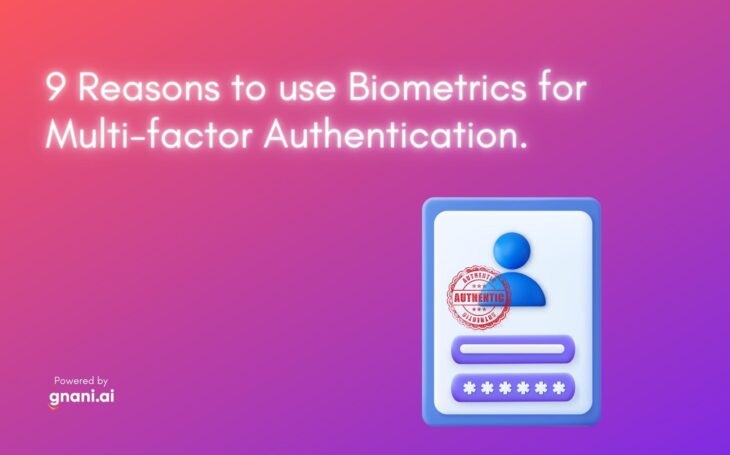
The use of biometrics for authentication purposes is not a new concept. However, it has only recently started to gain traction in the mainstream due to advances in technology. Biometrics refers to the use of physical or behavioural characteristics to uniquely identify an individual. This can include anything from a fingerprint to a voice print. In the past, biometric data was often collected using expensive and inaccurate devices. New developments in sensor technology have made it possible to collect high-quality biometric data using relatively inexpensive devices. As a result, biometrics is increasingly being used as a second or third factor in authentication schemes. When used in this way, biometrics can provide an additional layer of security without greatly impacting the user experience. In addition, combining multiple biometrics can further improve security while still being convenient for users. For these reasons, biometrics is likely to play an increasingly important role in authentication in the years to come.
There are a number of reasons why biometrics is an attractive option for authentication. First, biometrics is unique to each individual and therefore cannot be easily guessed or stolen like a password. Second, biometrics is typically collected using sensors that are difficult to spoof. This means that it is much harder for an attacker to forge a biometric than it is to steal or guess a password. Third, the use of biometrics can be combined with other authentication factors such as something the user knows (e.g. a password) or something the user has (e.g. a security token). This makes it even more difficult for an attacker to gain access to an account. Fourth, the use of biometrics can greatly simplify the user experience by eliminating the need to remember multiple passwords or carry around multiple tokens. Fifth, biometrics can be used to verify the identity of an individual before granting them access to sensitive information or systems. This helps to prevent unauthorized access and protects the privacy of individuals. Finally, biometrics can be used in conjunction with security technologies such as encryption to further improve security.
There are a number of different types of biometrics that can be used for authentication purposes. The most common type is fingerprint recognition, which is used by many smartphones and laptops. Other popular options include iris recognition, voice recognition, and facial recognition. In general, any type of biometric that can uniquely identify an individual can be used for authentication.
Why you should use biometrics for Multi-factor Authentication (MFA)?
- Biometrics are more secure than passwords: Passwords can be hacked, guessed, or stolen. Biometrics, on the other hand, are unique to each individual and much harder to duplicate.
- They are more convenient than passwords: No need to remember a complicated password or carry around a physical token. Just use your fingerprint, iris scan, or face recognition to log in.
- It can’t be left behind: You can’t forget your fingerprint at home or leave your iris scan at the office. Your biometrics are always with you.
- It adds an extra layer of security: When used in conjunction with something you know (like a password) or something you have (like a key fob), biometrics creates a much more secure authentication system.
- It is fast and easy: With today’s technology, it’s quick and easy to set up biometric authentication. There’s no need for complicated passwords or time-consuming two-factor authentication methods.
- It’s the future: As we move towards a more digital world, biometrics will become increasingly important. They offer a more secure and convenient way to authenticate our identities.
- It can’t be easily spoofed: it’s difficult to fake a fingerprint, iris, or face. This makes biometrics a more secure authentication method than passwords or even two-factor authentication methods like security keys.
- It is becoming more common: Many smartphones and laptops now come with fingerprint scanners or other biometric authentication options. As biometrics become more common, they’ll be easier to use and more convenient.
- It offers a better user experience: With biometrics, there’s no need to remember multiple passwords or carry around multiple physical tokens. This simplifies the login process and makes it more convenient for users.
Conclusion
Biometrics offers a more secure and convenient way to authenticate our identities. They’re more difficult to hack, guess, or steal than passwords, and they can’t be left behind like a physical token. Biometrics are also becoming more common, with many smartphones and laptops now offering fingerprint scanners or other biometric authentication options. As biometrics become more prevalent, they’ll offer an even better user experience by simplifying the login process and making it more convenient for users.
Multi-factor authentication is becoming more common as we move into the future. Biometrics are a great way to provide an extra layer of security for your users and can be used in conjunction with other methods, such as passwords or PINs. If you’re looking for a way to improve the security of your website or app, biometrics may be the answer. Contact us today to learn more about how we can help you add this important layer of protection to your business.
What are your use cases for such authentication methods? Write them down in the comment below.




